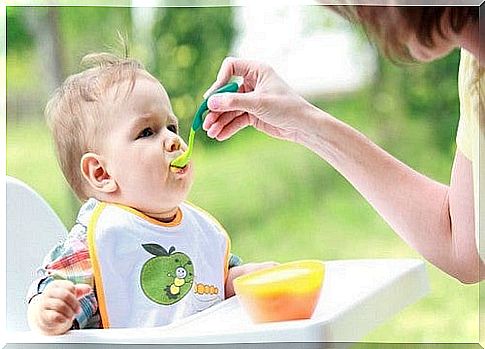Transition Food: This Guide Will Help You

Today we are going to talk about transition food. It may seem easy to feed a child, but in reality it is not. In the beginning, a baby’s diet consists exclusively of milk. The only decision you have to make is whether you want to breastfeed or give breast milk substitute. After six months, the diet consisting of menopause begins . This is the stage where you might start to worry about a better diet. You introduce water, and find out if there are any food allergies.
Diet with transition food
Babies need breast milk or infant formula to be able to develop and grow (during their first year). Babies drink breast milk during their first six months. This can then be extended and combined with transition food. A diet with menopause should begin at the age of six months, and never before the age of four months.
The purpose is not to replace breast milk, but instead to compliment it. Breastfeeding is still important, but it is important to offer babies new foods so they can begin to discover new tastes. This should be done with patience and without negative consequences if they refuse in the beginning. Babies need to get used to new taste sensations, textures and to move their mouths to start chewing.

Do not worry or get angry if the child refuses to eat new things, whether it has to do with taste or texture. This will have a negative effect on the good relationship your child has with food. If there is something your child does not want to eat, it is important that you simply calmly remove the plate and continue feeding as you normally would. Try the same thing the next day and the next day until he accepts the new food. You will be amazed at the result if you are patient.
This is what transition food should look like
Your baby is not able to chew even at the age of six months. Therefore, it is important that you present new taste experiences through pureed food. Semi-solid purees should also be introduced to help babies understand the movement of their mouths and that they should not just swallow without chewing. Little by little, you can start adding soft pieces of food as your baby becomes more comfortable.
All babies are unique and you need to know your baby so you know how to eat best. Not all babies accept snacks in their puree. They may refuse to eat or simply spit out their food. There are even babies who get the food wrong in the throat. Therefore, do not worry if you do not think your child is ready to try semi-solid food. Just continue with purees. The most important thing is that he gets enough to eat. He will soon learn to chew.
It is important that you also start introducing the use of a spoon when you start with menopause. Purees and mash should not be served in a bottle, as this deprives the child of the opportunity to learn to eat with a spoon. You can use a bottle to give milk or breakfast products, but nothing else. Transition food is best when served with a baby.

How to start a diet with transition food
New foods should be offered one at a time and your doctor should provide you with a written guide to feeding infants with the necessary steps you need to follow. Never introduce more than one new food at a time. This will not just be too many new taste experiences at once, but if allergies or intolerances exist, you will not know which one is the cause. Your child will not accept the new food right away because he first has to experiment with it.
Before giving your child new foods, be aware of whether his stools are normal, that he does not vomit, that strange marks do not appear on the skin, and that he has no other symptoms. Every time you introduce a new food, make sure that he receives it well and that his body does not have any negative reactions. If strange reactions occur, consult a pediatrician as soon as possible and remove that food from your baby’s diet.
There is a strict order you should follow when it comes to the type of food you should give your baby as his tummy is still very delicate. Tell your pediatrician about the concerns you have so he knows what foods to introduce first and what foods to wait for until a later age.









